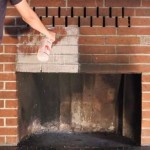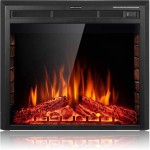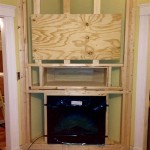Stacked Stone Fireplace Installation Cost: A Comprehensive Guide
A fireplace serves as a focal point in a home, providing warmth and ambiance. The visual appeal of a fireplace is significantly enhanced through the application of stacked stone. The cost of installing a stacked stone fireplace varies depending on several factors, including the type of stone, the complexity of the design, and labor expenses. This article provides a detailed breakdown of the potential costs associated with installing a stacked stone fireplace.
Understanding the Key Cost Drivers
Several factors contribute to the overall cost of a stacked stone fireplace installation. These factors need to be considered when planning a budget for this type of project.
Type of Stacked Stone: The type of stone selected plays a significant role in the final cost. Natural stone, such as granite, marble, and slate, are generally more expensive than manufactured stone veneers. Natural stone offers unique variations in color and texture, adding a distinct aesthetic. However, the weight and irregular shapes of natural stone can increase labor costs due to the need for specialized cutting and fitting. Manufactured stone veneers, on the other hand, are lighter, more uniform, and often easier to install, leading to lower labor costs. The price per square foot of material can range significantly, from $5 to $15 for manufactured stone and $10 to $30 or more for natural stone.
Size and Complexity of the Fireplace: The size of the fireplace and the complexity of the design directly influence the amount of material needed and the labor hours required. A larger fireplace naturally requires more stone, increasing material costs. Intricate designs, such as those incorporating arches, corners, or custom patterns, necessitate more precise cutting and fitting, thereby increasing labor costs. Simple, straightforward designs are generally less expensive to install.
Labor Costs: Labor costs represent a significant portion of the overall expense. Experienced masons or contractors typically charge an hourly rate, which varies depending on their expertise, location, and the complexity of the project. Prepping the fireplace structure, applying mortar, cutting and fitting the stone, and grouting and sealing the finished installation all contribute to the total labor hours. Demolition and removal of existing materials, if required, also add to the labor costs. Labor rates can range from $50 to $100 or more per hour.
Additional Materials and Supplies: Beyond the stacked stone itself, various other materials and supplies are necessary for a successful installation. These include mortar, grout, sealant, backer board (if needed), metal lath, and potentially framing materials. The cost of these materials is relatively low compared to the stone and labor, but they are essential for a durable and aesthetically pleasing result.
Permits and Inspections: Depending on local building codes, a permit might be required for fireplace modifications or installations. Obtaining a permit involves fees and ensuring the project complies with safety regulations. Inspections may also be necessary at various stages of the installation to verify code compliance. These permit and inspection fees can add to the overall project cost.
Estimating Stacked Stone Fireplace Installation Costs
To provide a general estimate, a stacked stone fireplace installation can range from $2,000 to $10,000 or more. This broad range highlights the impact of the factors mentioned earlier. A smaller fireplace with manufactured stone and a simple design installed by a moderately priced contractor would likely fall on the lower end of the spectrum. Conversely, a large fireplace using natural stone, featuring a complex design, and installed by a high-end contractor would be on the higher end.
A more detailed estimation process involves calculating the surface area to be covered in stacked stone. Measure the height and width of the fireplace area and multiply these dimensions to determine the square footage. Add a buffer of approximately 10% to account for cuts and waste. Obtain price quotes for the chosen stacked stone material per square foot. Multiply the total square footage by the material cost to estimate the material expenses. Next, obtain quotes from several contractors for the labor component. Provide them with detailed information about the project, including the size and complexity of the design, the type of stone selected, and any specific requirements. Compare the quotes carefully, considering not only the price but also the contractor's experience, reputation, and insurance coverage.
Remember to factor in the cost of additional materials, permits, and inspections. Obtain quotes for these items separately to have a comprehensive cost estimate. It is also prudent to set aside a contingency fund of approximately 10% of the total estimated cost to cover unexpected expenses or changes to the project scope.
Cost Saving Strategies
While a stacked stone fireplace installation can be a significant investment, several strategies can help reduce the overall cost.
Choose Manufactured Stone Veneer: As previously mentioned, manufactured stone veneer is generally less expensive than natural stone. While natural stone offers unique aesthetics, manufactured stone veneers can provide a similar look at a lower price point. Explore different manufactured stone options to find one that suits the desired style and budget.
Opt for a Simpler Design: Complex designs require more labor and expertise, increasing installation costs. Choosing a simpler, more straightforward design can significantly reduce labor hours. Consider clean lines and minimal ornamentation to achieve a visually appealing result without excessive complexity.
Obtain Multiple Quotes: Getting quotes from several contractors is essential for finding the best price and ensuring fair market value. Compare the quotes carefully, considering the scope of work, materials included, and the contractor's qualifications. Don't automatically choose the lowest bid; prioritize experience and reputation to ensure a quality installation.
Consider DIY Installation (with caution): While DIY installation can save on labor costs, it is only recommended for individuals with significant experience in masonry and construction. Improper installation can lead to structural issues, aesthetic problems, and potential safety hazards. If considering DIY installation, thoroughly research the process, acquire the necessary skills and tools, and carefully follow manufacturer's instructions. It is often more cost-effective to hire a professional than to attempt a DIY installation and risk costly mistakes.
Plan the Project During Off-Season: Demand for renovation services might be lower during certain times of the year, such as winter or early spring. Contractors may be more willing to offer discounts or lower rates during these periods to secure projects. Planning the installation during the off-season can potentially lead to cost savings.

Cost To Install A Stone Fireplace Estimates S Contractors

Natural Stacked Stone Veneer Fireplace Ideas

17 Modern Stacked Stone Fireplace Ideas For Your Home

Stacked Stone Fireplace Cost Installation Examples Ideas

12 Stacked Stone Fireplace Ideas For Optimal Coziness

12 Stacked Stone Fireplace Ideas For Optimal Coziness

How To Install A Stacked Stone Fireplace Practical Whimsy Designs

Thin Stone Veneers Make A Fireplace Update Easy Swenson Granite 100 Natural Stones

Stone Veneer Stack Glacier Mountain View

Diy Fireplace Design Using Stacked Stone Genstone
Related Posts








